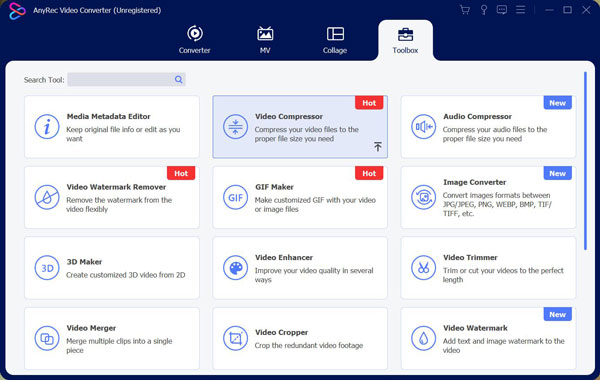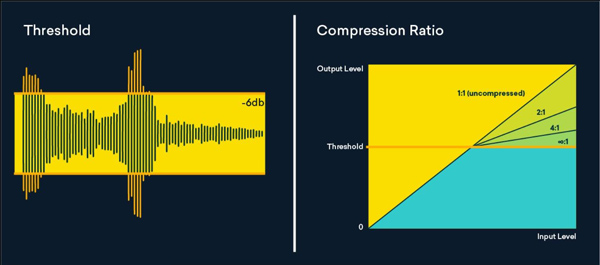What is Audio Compression: Shrink Size and Change Dynamic Range
When talking about audio compression, there are two types which are shrinking the file size and changing the dynamic range. The former is just to shrink the file size, many people want small file sizes to upload to social media or some other platforms. And the latter is more about professional audio editing. Audio compression for dynamic range is a useful tool for sound engineers who want to smooth out the sound of instruments, vocals, and more. This article will tell you about the detailed steps on how to do these two actions. You can use the best tool to compress the audio size and learn the knowledge about changing dynamic range.
Guide List
Compress the Audio Data [File Size] Compress the Audio Level [Dynamic Range] FAQs about Audio CompressionCompress the Audio Data [File Size]
If you just want to make an audio compression of the file size, it is easy to use the software to do it. But if you want your audio no clear quality loss or noise exist, AnyRec Video Converter could be the best choice to compress audio size for you. This software does not only support you to compress the file size but also change many file attributes such as Channel, Bitrate, Sample Rate, and so on. So, you cannot only use this software to get the unwanted size of the audio but also set the attributes to suit the requirements you need.

Compress the audio file size without decreasing the audio quality too much.
Decrease the noise existing after the audio file compression.
Change many file attributes to get a better effect.
Support preview functions for you to listen to the audio before the compression is done.
Secure Download
Secure Download
Here are the steps on how to use AnyRec Video Converter to do the audio file compression:
Step 1.After you launch the "AnyRec Video Converter", click the "Toolbox" button on the main screen.
Step 2.Then you can click the "Audio Compressor" button from the "Toolbox" screen.

Step 3.After choosing the audio you want to compress; you can see there are many attributes you can change. You can input the accurate number or drag the horizontal slider on the "Size" button to compress the audio. What’s more, you can also change other attributes like Bitrate, Sample Rate, or something else you like.

Step 4.The last step is to choose the save path and then click the "Compress" button to finish the audio compression.
Compress the Audio Level [Dynamic Range]
There is another audio compression to compress the audio level called dynamic range compression. Dynamic range compression or simply audio level compression is an audio signal processing operation that reduces the volume of loud sounds or amplifies quiet sounds, thus reducing or compressing an audio signal's dynamic range. Compression is commonly used in sound recording and reproduction, broadcasting, live sound reinforcement, and in some instrument amplifiers.

There are many compressors to adjust the dynamic range, you can use Adobe Au or some other software. The audio level compression is not like shrinking the file size, everyone has different preferences for their audio. But here are some notices you should know before doing the audio compression for dynamic range:
Threshold
The level where the compressor begins working is called the threshold—you set it with a dB control to determine the parts of the signal the compressor acts on. Set the threshold high and the compressor will only reduce the gain of the most aggressive transients
Ratio
The ratio control determines how much the compressor reduces the gain once the signal passes the threshold. And it is written as a comparison with the unaffected signal. The higher the first number in the ratio, the more intense the compression.
Attack time
The attack time is how long it takes the audio signal to be fully compressed to the ratio set after it has crossed the threshold. So, you can set a slower attack to create some punch from an instrument that’s softer, like a keyboard, or a fast attack to quickly compress the sound of a loud guitar pick.
Release time
The release time is how long it takes the audio signal to revert from being affected to uncompressed. At low levels of gain reduction, fast-release speeds sound the most natural. However, extreme compression with a fast release time can result in a pumping effect — or a sudden increase in volume — that can make the track sound uneven in some genres of music.
FAQs about Audio Compression
-
How does compression affect audio quality?
Compression is used in music to reduce the dynamic range of signals with loud and quiet elements so that both can be heard clearly. Compression is used in music to reduce the dynamic range of signals with loud and quiet elements so that both can be heard clearly.
-
What is the best compression for audio?
A lossless audio file format is the best format for sound quality. These include FLAC, WAV, or AIFF. These types of files are considered "hi-res" because they are better or equal to CD quality.
-
Is lossless audio compression possible?
Lossless audio compression is a class of data compression that allows the original data to be perfectly reconstructed from the compressed data with no loss of information. Lossless audio compression is possible because most real-world data exhibits statistical redundancy.
Conclusion
As you can see, these two audio compressions are quietly different. Dynamic range compression is for a better audio effect for listeners. And if you just want to shrink the file size, you can use AnyRec Video Converter to get the best quality compressed audio file!
Secure Download
Secure Download
